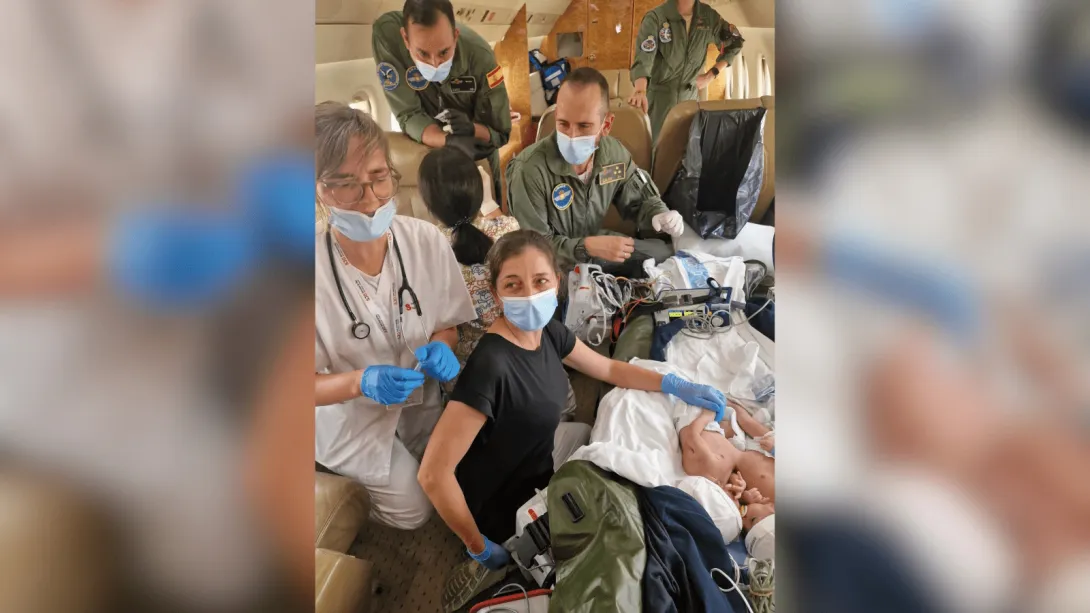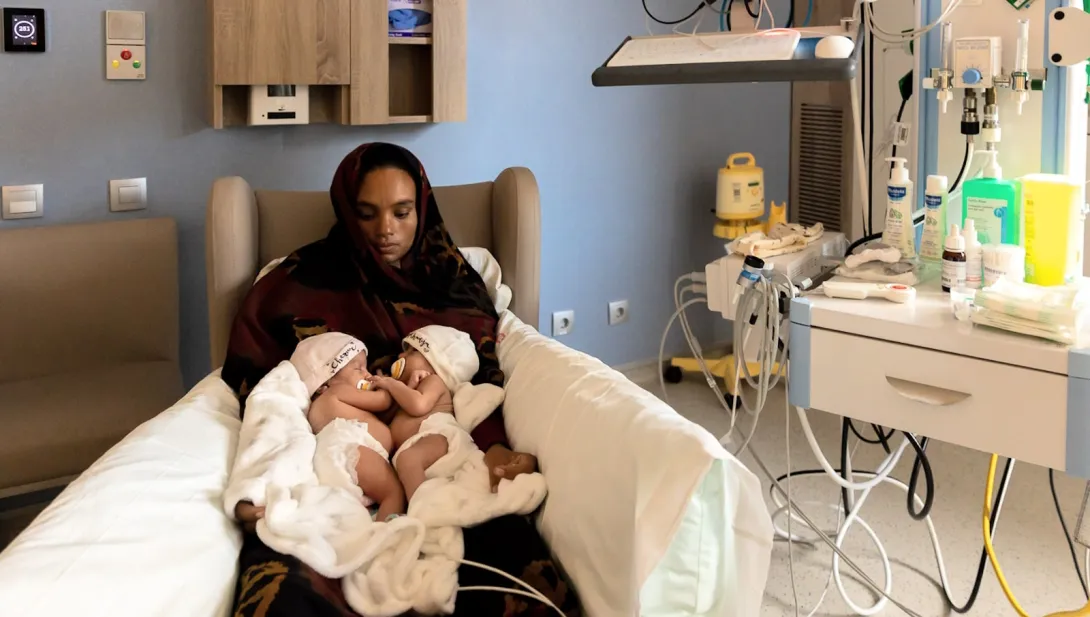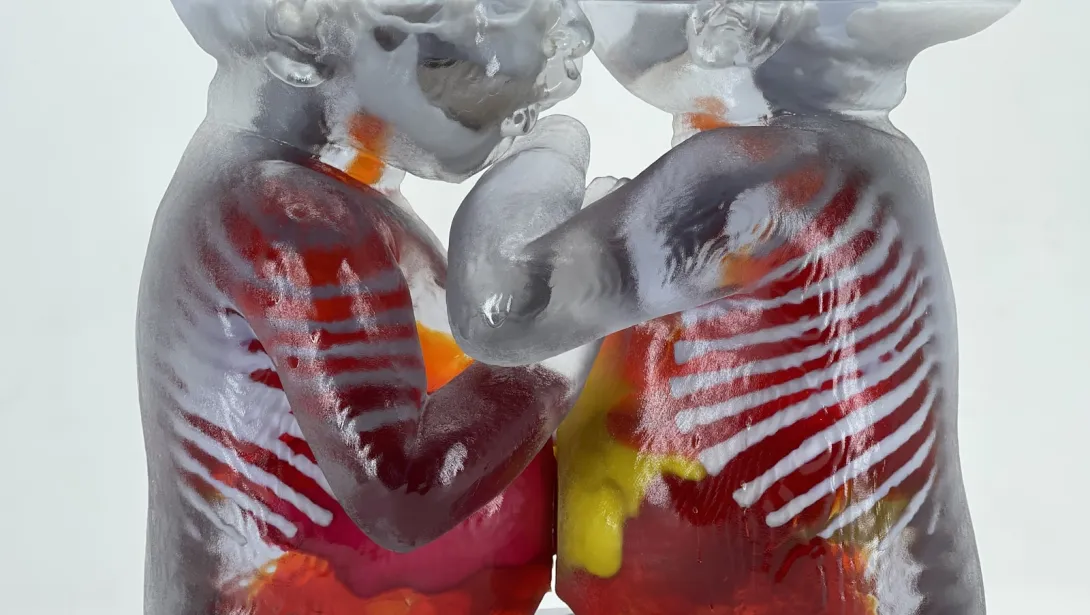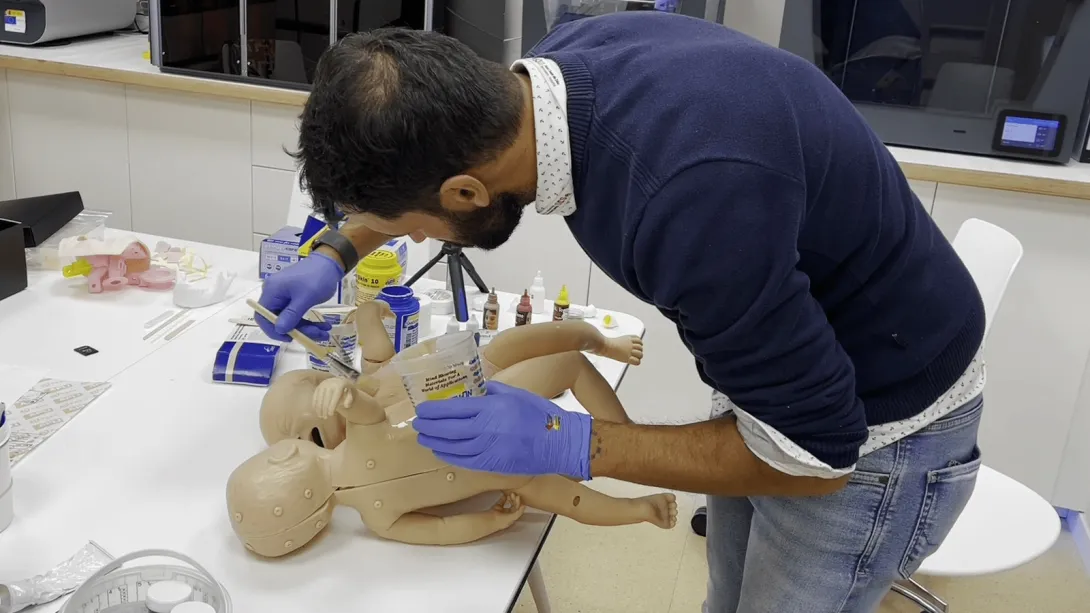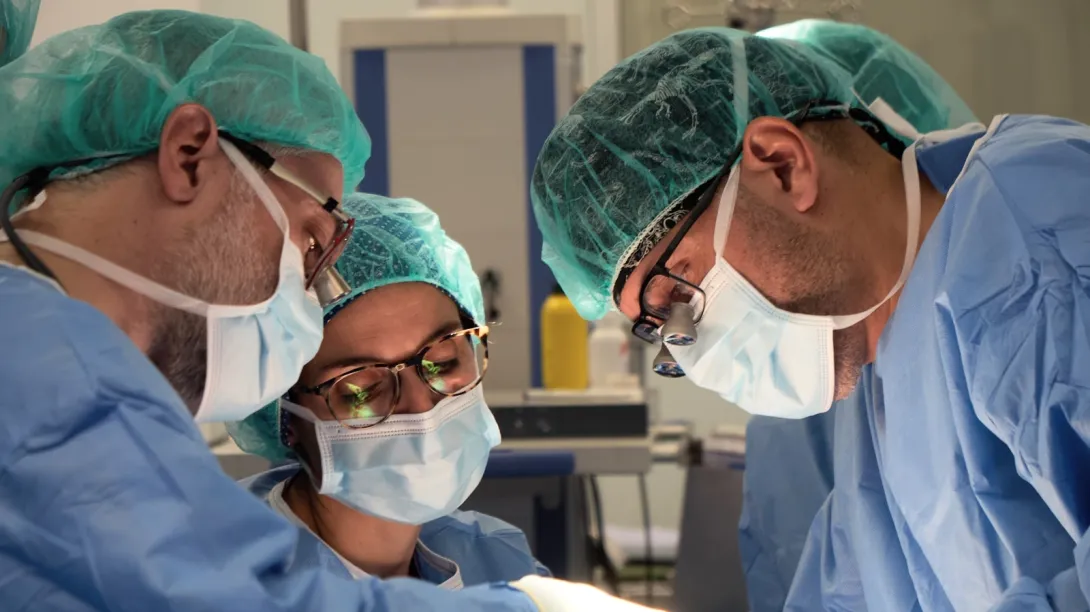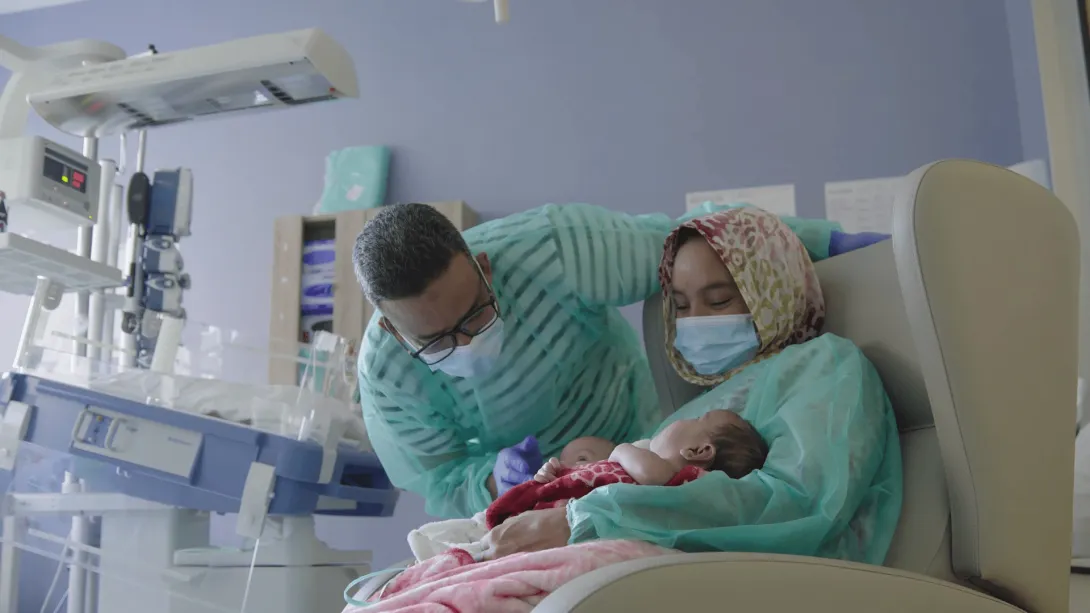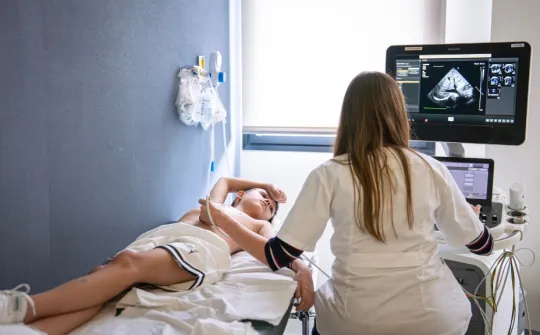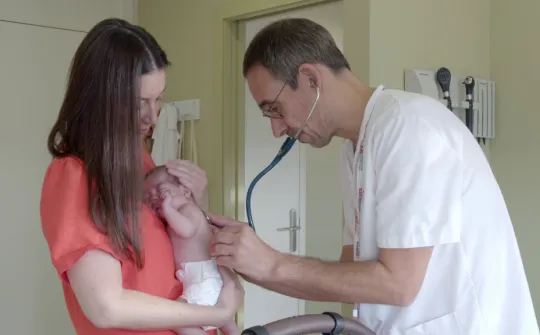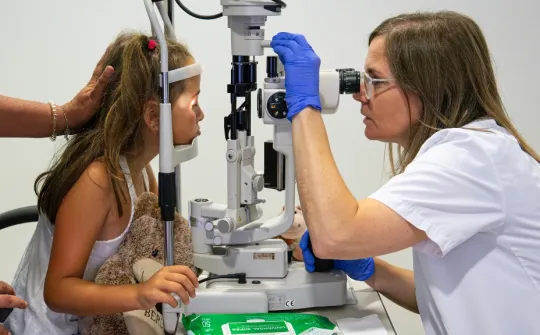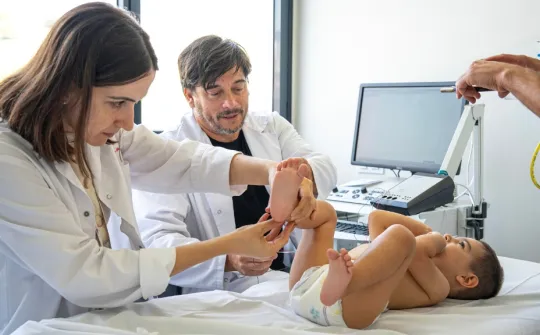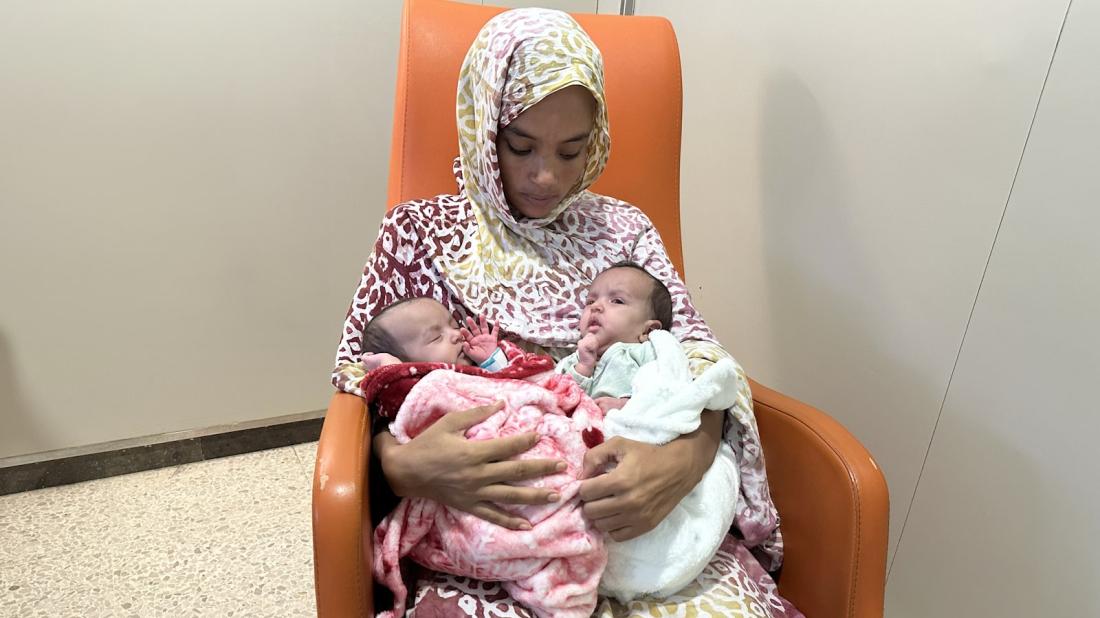
The baby girls, referred from Mauritania and treated in Barcelona through the SJD ‘Cuida’m’ Programme will be discharged in the coming days and will be able to return home
Khadija and Cherive were born on the 8th of October in Mauritania, joined at the upper abdomen and with only one umbilical cord between them. As it was impossible to separate them in their home country, Mauritanian health authorities turned to the international cooperation agreement in place between their Ministry of Health and the SJD Barcelona Children's Hospital, referring the girls to our Catalonian facilities for assessment.
One week after they were born, the medical team at the SJD Barcelona Children's Hospital received photos from Mauritania, deciding that the separation was possible and could be performed at the Barcelona facility. Khadija and Cherive would then travel to the SJD Barcelona Children's Hospital for treatment thanks to the Hospital’s charitable programme called Cuida’m. This initiative uses private donations to fund treatment for children with severe (but curable) diseases who live in low-income countries and cannot be treated there.
The campaign to bring Khadija and Cherive was launched immediately. On the 25th of October, the girls were transported to Barcelona in a Spanish Air Force aircraft, and cared for at all times by a neonatal team from the SJD Barcelona Children's Hospital. ‘We were prepared to give the girls as much support as possible, but it wasn’t necessary. They were as good as gold. The medical teams in Mauritania had them well looked after’, recalls Ana Alarcón, one of the neonatal pediatricians who accompanied the twins during their journey.
The girls landed in Barcelona on the morning of the 26th of October, and were transferred to the SJD Barcelona Children's Hospital by pediatric EMS ambulance. Professionals got to work immediately, carrying out various radiodiagnostic tests to confirm the degree to which the twins were conjoined, finding out which organs were shared, and if there were bone and/or blood connections between both girls. Testing confirmed that the twins were Omphalopagus, meaning they were joined at near the bellybutton and had two separate livers, but there was a 6 centimetre area of shared tissue.
It is estimated that conjoined twins make up one in every 250,000 twin births across the world. Many are stillborn or do not survive their first few months of life due to the severity of their connection (such as the organs they share). The percentage of Omphalopagus twins—joined at the bellybutton, and who can share a liver and/or parts of the digestive tract—makes up 20% of all conjoined twins.
Operation simulation
For very complex surgical procedures carried out at the SJD Barcelona Children's Hospital, or for those requiring the involvement of many different professional teams (such as with separating conjoined twins), the Hospital often chooses to simulate the operation beforehand. This allows the surgical team to plan the surgery in detail and practice the technique before the actual operation. With this in mind, teams on the Simulation Programme and in the 3D Unit at the Hospital created a to-scale virtual 3D replica of the twins, which allowed surgeons to decide which approach would be best for the operation and practice it.
One week before the operation, the simulation took place. The aim was to reproduce not only the surgical procedure that was to take place, but also the physical space. ‘This operation had an added complication. While we started with just one operation on the one patient (being the conjoined twins to be separated), after they were separated we would then have two patients and two distinct operations. We had to have two operating tables in the one theatre to properly finish the procedure on both girls separately, to reconstruct their abdominal wall and close the wound’, explains Xavier Tarrado, Head of Pediatric Surgery at the SJD Barcelona Children's Hospital.
José Quintillá, Head of the Hospital’s Simulation Programme, explains that, among several other clinical aspects, the virtual trial run allowed the surgical team to figure out the best way to position the twins on the operating table, how to intubate them and the best surgical approach. It also allowed them to decide how to lay out the various surgical tools and how they should move around the theatre so as not to get in the way of their colleagues.
‘It was extremely useful. Thanks to the simulation, the surgical team felt like we had already performed this operation before. We knew exactly how to tackle the surgery, and this meant we completed it in less time and much more safely’, says Tarrado.
In the end, the patients had their operation on the 8th of November. It lasted five hours and involved around 20 different professionals: from anesthesiologists, surgeons, neonatologists, nurses and assistants, to engineers, bioengineers and imaging technicians, among others.
After the operation, Khadija and Cherive were transferred to the Neonatal Intensive Care Unit and recovered quickly. Five days later, they were transferred to the hospital ward, and soon after, discharged. A surgeon from Mauritania, who came to Barcelona to observe the procedure, will monitor the girls when they return home.
Collaboration between SJD and Mauritania
Khadija and Cherive’s treatment was only possible thanks to the charitable programme Cuida’m, run by the SJD Barcelona Children's Hospital. This programme, which is donation-funded, allows children with severe (but curable) diseases who live in low-income countries to come to the SJD Barcelona Children's Hospital and get the treatment they need, which they cannot access in their home country. The goal is for them to return home healthy and with a better quality of life.
Cuida’m is part of the international cooperation initiative run by the SJD Barcelona Children's Hospital, which also offers digital consulting and training services for primary pediatric caregivers in countries like Mauritania.
